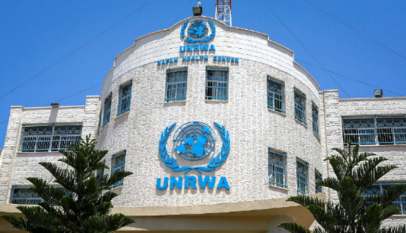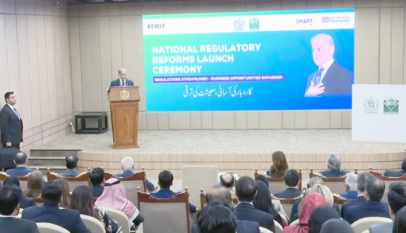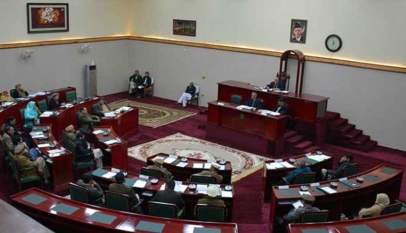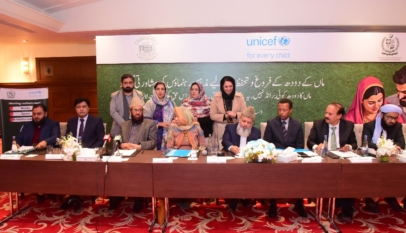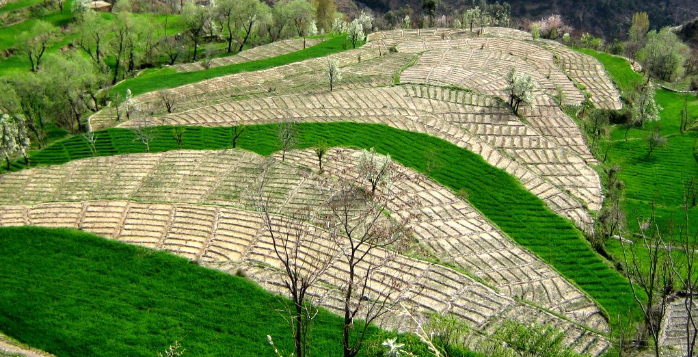
By Arshad Jan
SWAT: “We are also Pakistanis. Our agricultural lands and foreign vegetables were badly affected by the recent flood, which caused us approximately Rs 60-70 lakh in financial losses. However, despite this huge loss, no one has asked about us or provided any relief package yet,” said a gloomy Bakht Said, a flood-affected farmer of Utror valley who was sitting near his washed away land.
Mr. Said’s agricultural lands were badly destroyed first by the 2022 and then the 2024 devastating floods.
Utror is a beautiful valley with a population of nearly 20,000. It is located in the Swat District of Khyber Pakhtunkhwa. Situated 16 km (9.9 mi) away from Kalam valley and 116 km (72 mi) from Saidu Sharif, Mingora, the valley is renowned for its glacial lakes, snow-clad mountains, thick forests, springs, and delicious vegetables. It has been a focal point for tourists, drawing visitors from across the country and around the globe. Specifically, the valley’s foreign delectable vegetables are highly acclaimed, being exported to foreign countries and utilized in other high-standard national hotels.
According to the Agricultural Department Extension of Khyber Pakhtunkhwa, a total of 4851.328 acres of agricultural land in Upper Swat was destroyed during the recent floods. This included 2255.4546 acres of wheat crops and 1317.2046 acres of vegetable lands.
Similarly, 217.9818 acres of agricultural land in the Utror valley were damaged, comprising 46.39636 acres of vegetable crops in Gabral village council, 35.39636 acres in Mali, 40.39636 acres in Shaheen Abad, 43.39636 acres in Sazgal, and 52.39636 acres in Samar Bagh village council. Furthermore, the statistical data indicates that the damaged vegetables include peas, potatoes, cabbage, and turnips.
Due to the harsh weather and heavy rains, the recent flood washed away buildings, lands, and bridges. Unusually, flash floods cut off communication for locals and badly destroyed crops and vegetables in the region, causing farmers to incur huge financial losses.
Adil Zada, a farmer in the Utror valley of Kalam, told the Morning Post that he has been leasing lands for the last 12 years for foreign vegetables. Unfortunately, they were extremely destroyed by the recent flood. “We had leased lands for 75 lakhs, which had 14 types of foreign vegetables such as Iceberg Lettuce, Broccoli, Parsley, and Romaine. We suffered losses of Rs 47 lakhs due to the flood,” he further said. Adding that they are disappointed with the government, which has not provided any relief package yet to the flood-affected farmers. Moreover, he demanded that the relevant authorities provide a relief package to them.
“Farming foreign vegetables is different from cultivating local ones; they have a shorter shelf life and were severely affected in the gardens due to all bridges being cut off. This has resulted in losses of approximately Rs 70 lakhs for us. We have yet to receive any relief package from the provincial government,” said Bakht Said, another farmer of Utror valley, emphasizing that no one has inquired about his losses yet.
Due to climate change and shifting weather patterns, Pakistan faces many challenges such as water scarcity, frequent floods, droughts, and heatwaves. Environmental experts assert that increasing forested areas can play a key role in mitigating global warming and stabilizing weather patterns.
Dr. Sher Shah, a professor at the Forestry Department of the University of Swat, is mobilizing students for plantation drives and awareness sessions in Swat. He emphasizes that extreme deforestation is the main cause of floods. Due to deforestation, rainfall directly hits the soil, causing it to become loose. Subsequently, rainwater carries this soil from the hills down to the River Swat, leading to siltation and disturbing the ecology of the fish fauna in the river.
“According to international guidelines, every country must have 25% forested land. However, Pakistan currently only has 5% forested lands, including Canal side plantations and Road Forestry. This leaves a 20% gap, and the purpose of increasing forested areas is to address shifting rainfall patterns caused by global warming,” he said, adding that it is essential to control carbon emissions.
Furthermore, he mentioned that hilly areas and other forested regions face a significant risk of flash floods. Similarly, there is a huge threat of floods in Gilgit and northern areas where glaciers are melting due to global warming, potentially causing damage to upper and lower areas due to the lack of protected riverbanks in Sindh and Punjab provinces.
The experts stressed to overcome climate change effects and GLOFs events require a long- term strategies in Pakistan, including implementing flood early warning System, promoting sustainable land use practices, building flood resilient infrastructure, afforestation and reforestation, improving agricultural practices, enhancing climate resilience and raising public awareness on immediate basis.



